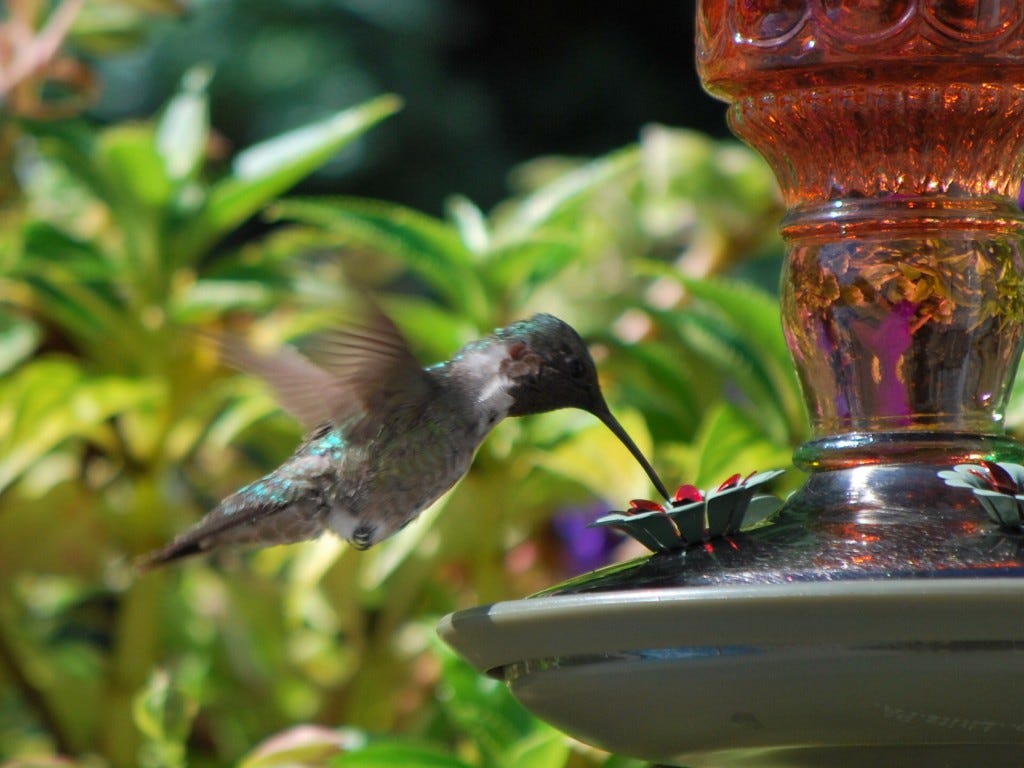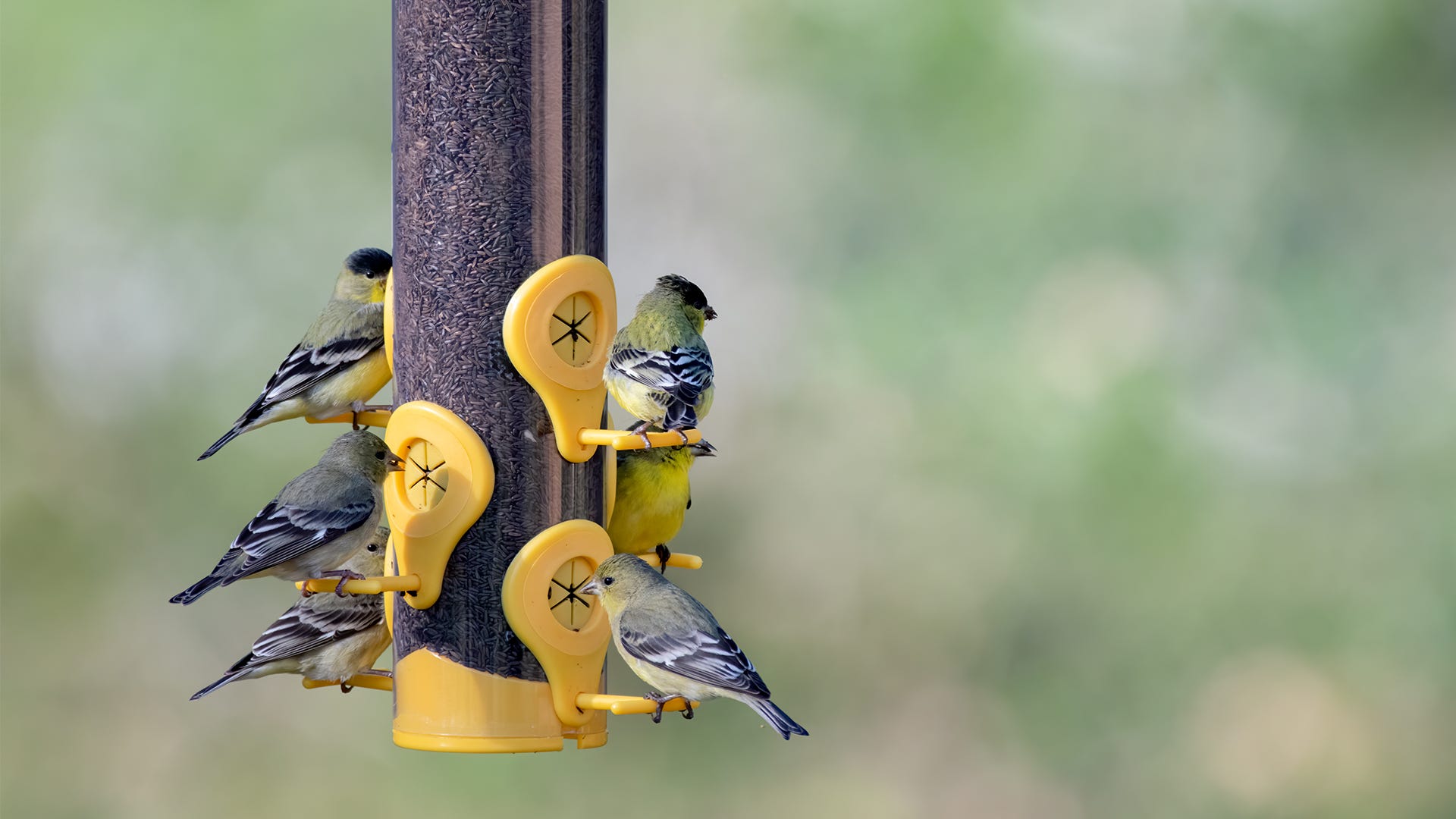Bird feeding can be a budget-busting hobby, but only if you let it! Read on to discover many bird seed alternatives and cheap bird feeding ideas that can keep your wallet, and yard, full!
Take care of what you have
 If you’ve already spent the money on quality feeders and bird baths, don’t let them deteriorate. Fix or sustain the materials you already have.
If you’ve already spent the money on quality feeders and bird baths, don’t let them deteriorate. Fix or sustain the materials you already have.
- BIRD BATHS: Store clay bird baths inside for the winter so they don’t crack from freezing temperatures. Clay absorbs moisture. When moisture is absorbed and freezes, the clay expands and causes cracking.
- BE TIDY: Clean your bird feeder often to prevent the spread of avian disease and to promote good bird health. Aside from promoting a healthy bird population, you’ll also reduce corrosion caused by bird waste, old food and debris.
The Starling problem
Starlings typically come in large groups and consume a lot of food. They crowd the feeders, cause structural and environmental damage with their droppings, and keep other birds you really want to see, away from your feeder.
- DIET CONTROL: Offer food they don’t typically prefer, like safflower seed, which attracts purple finches, cardinals, chickadees, nuthatches, tit mice, and grosbeaks. Serve unblended seed in tube feeders, hopper feeders, or open trays. Squirrels, grackles, and crows don’t care for safflower either.
- DELIVERY METHOD: Serve food upside down because Starlings physically cannot cling to an upside-down feeder. There are specialty feeders that have feeding ports which allow goldfinches to feed in an upside-down position.
Other bird seed alternatives to offer to birds include fruit and vegetable seeds, dried fruits, peanut butter and/or jelly, apples, pears, nuts, and unbuttered popcorn.
DIY bird feeder hacks
Love bird feeding but don’t want to break the bank with expensive feeders, waterers, baths, and food? Try these do-it-yourself projects and bird seed alternatives that are budget friendly, fast, and simple solutions! Most materials can be found at your local hardware or grocery store.
- ON YOUR OWN: Check out our full list of DIY Bird Feeders on the Perky-Pet® Pinterest profile.
- TAKIN’ A BATH: You can even make your own bird bath, to give your feathered friends the opportunity to splish and splash!
- FOOD: Another way to bird feed on a budget is by making your own hummingbird nectar. Simply use the 4:1, water:sugar, ratio; boil four cups of water and add sugar, stirring until dissolved, cool and store.
Budget bird feeding is a fun, and fulfilling, contribution to the environment, but don’t skimp on the health and well-being of wild birds. Protect and maintain their lifestyle just like you would your own, with care and commitment.








